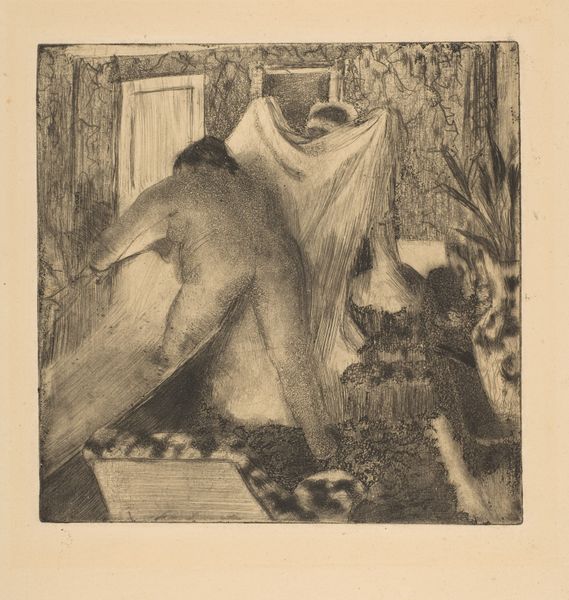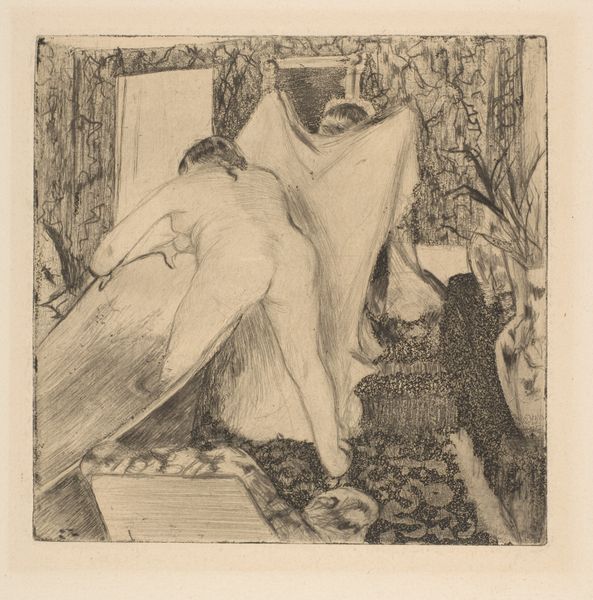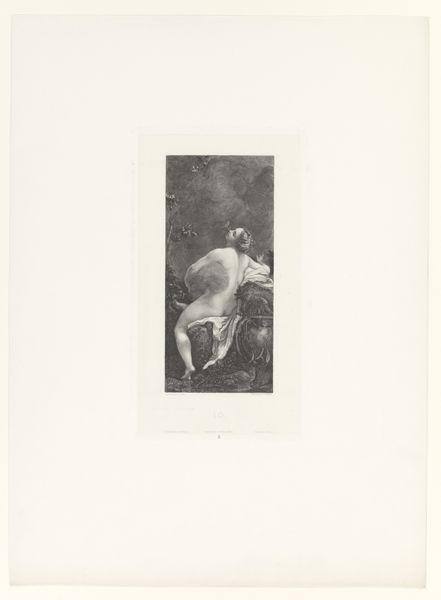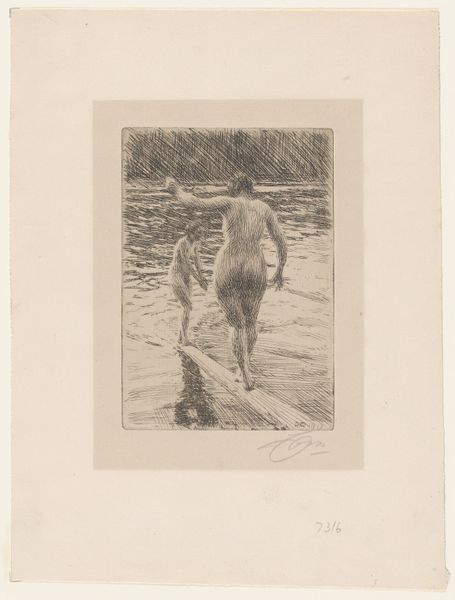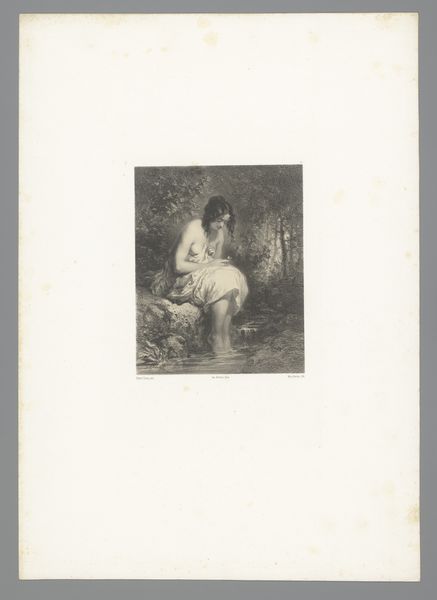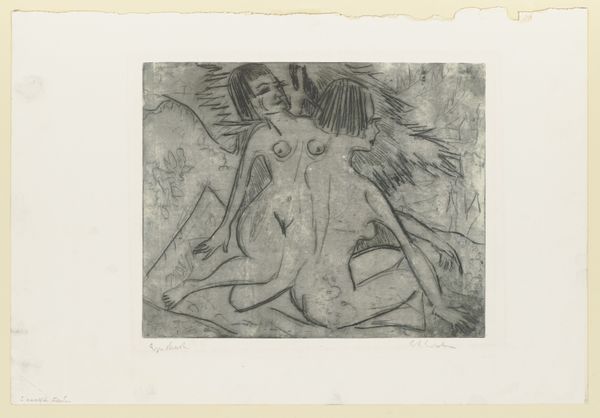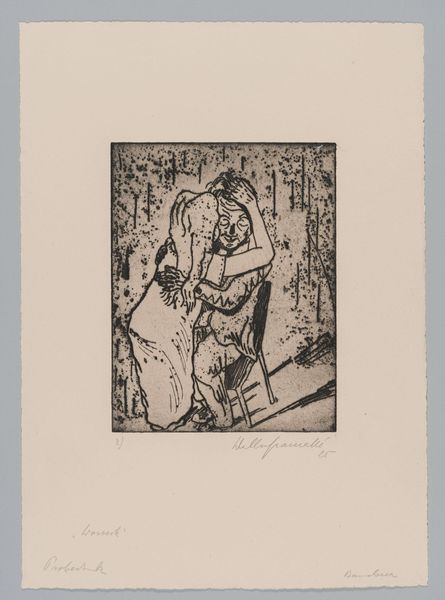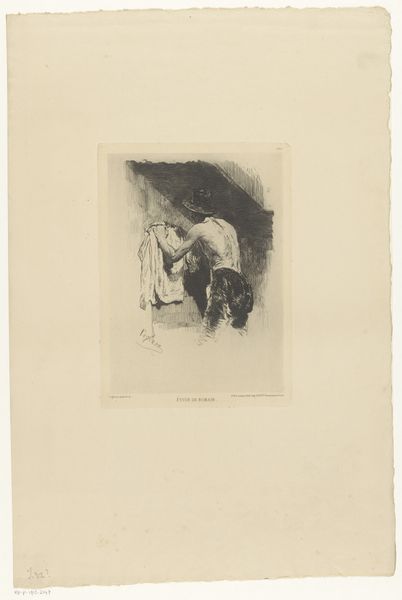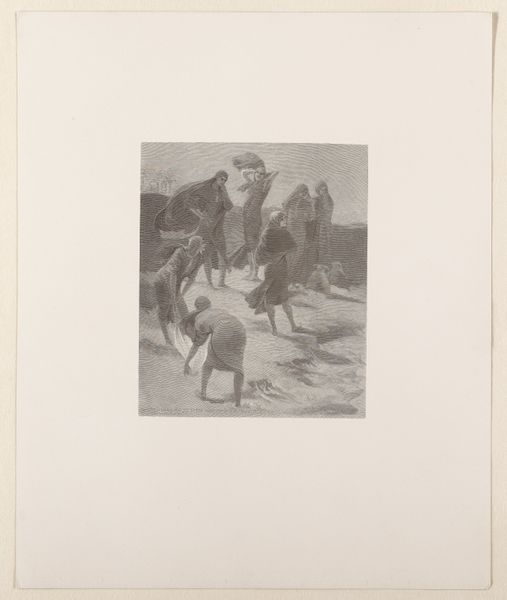
drawing, print, etching, paper
#
drawing
# print
#
impressionism
#
etching
#
landscape
#
figuration
#
paper
#
intimism
#
nude
Dimensions: 128 × 128 mm (image/plate); 236 × 181 mm (sheet)
Copyright: Public Domain
Editor: Here we have Edgar Degas’ "Leaving the Bath," likely created between 1879 and 1880. It's an etching, a print on paper. The dark, scratchy lines give the piece an intimate and somewhat secretive feel. What do you see when you look at it? Curator: The power of this etching resides in Degas' masterful manipulation of line and form. Note how the composition guides the eye, beginning with the sharp angles of the bathing platform, moving along the contour of the bather’s back, and finally resting upon the draped cloth overhead. Editor: Yes, it's fascinating how the eye is led through the image! But what does that compositional choice signify? Curator: Consider the strategic placement of shadow and light. See how the darkest areas delineate the bather's form, emphasizing her physicality, while the lighter areas suggest depth and texture in the surrounding space. What do you observe about the relationship between the figure and the background? Editor: The background feels almost abstract. The figure is very present while the background just kind of fades into the lines... Curator: Precisely! The dissolution of the background serves to further isolate and foreground the bather, transforming the act of bathing into an almost sculptural study of the human form. It transcends narrative. Editor: I see it now! I initially got caught up in trying to interpret a story. Seeing it as a study of form is a totally different experience. Thank you! Curator: Indeed. By attending to its formal properties, the work yields a new significance. A lesson worth retaining when experiencing art.
Comments
No comments
Be the first to comment and join the conversation on the ultimate creative platform.


